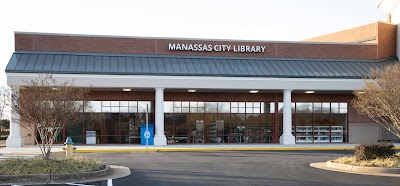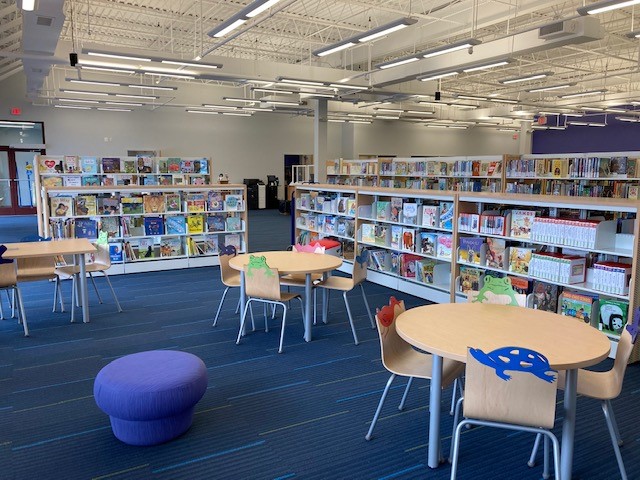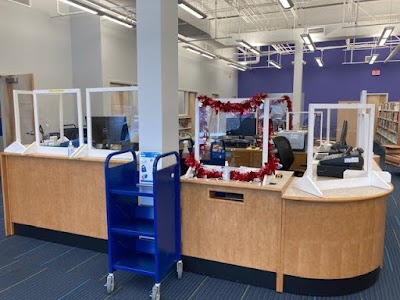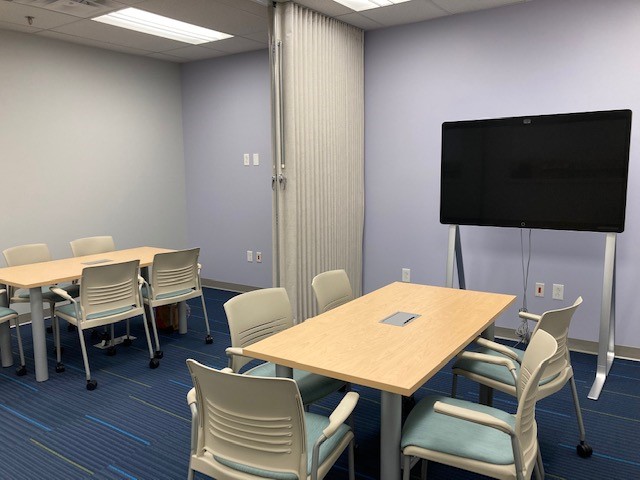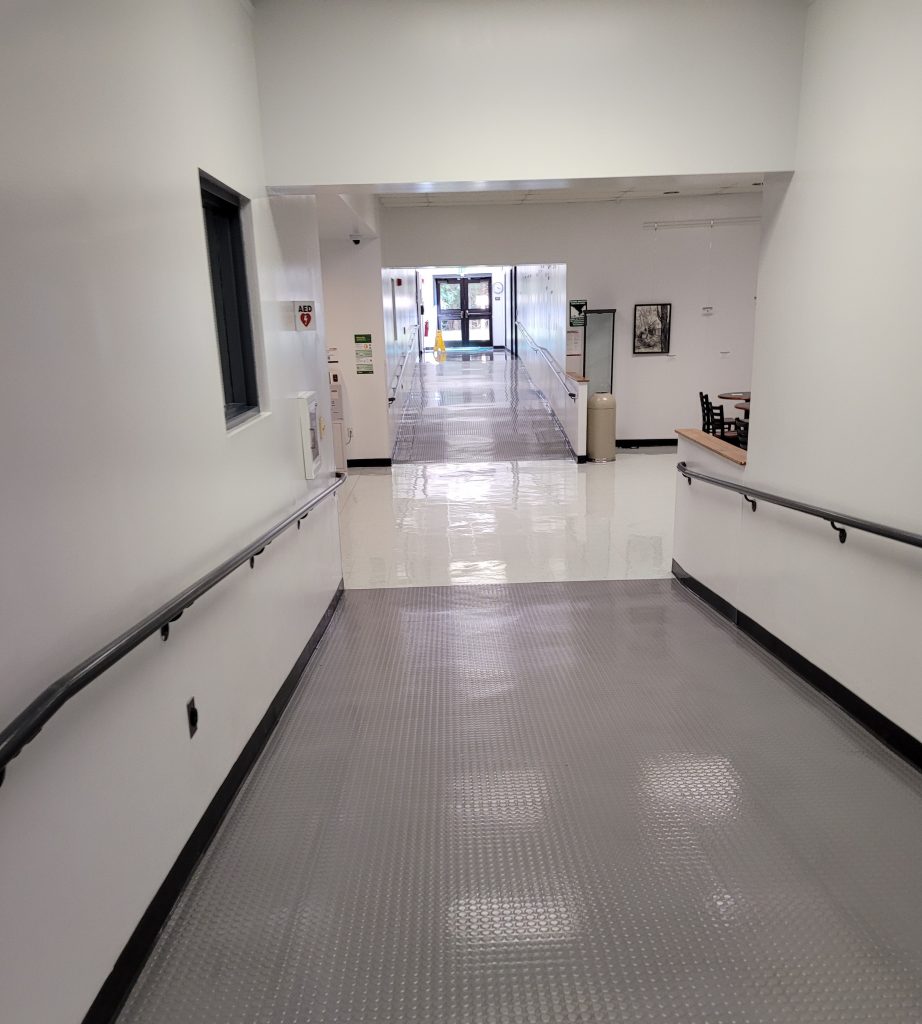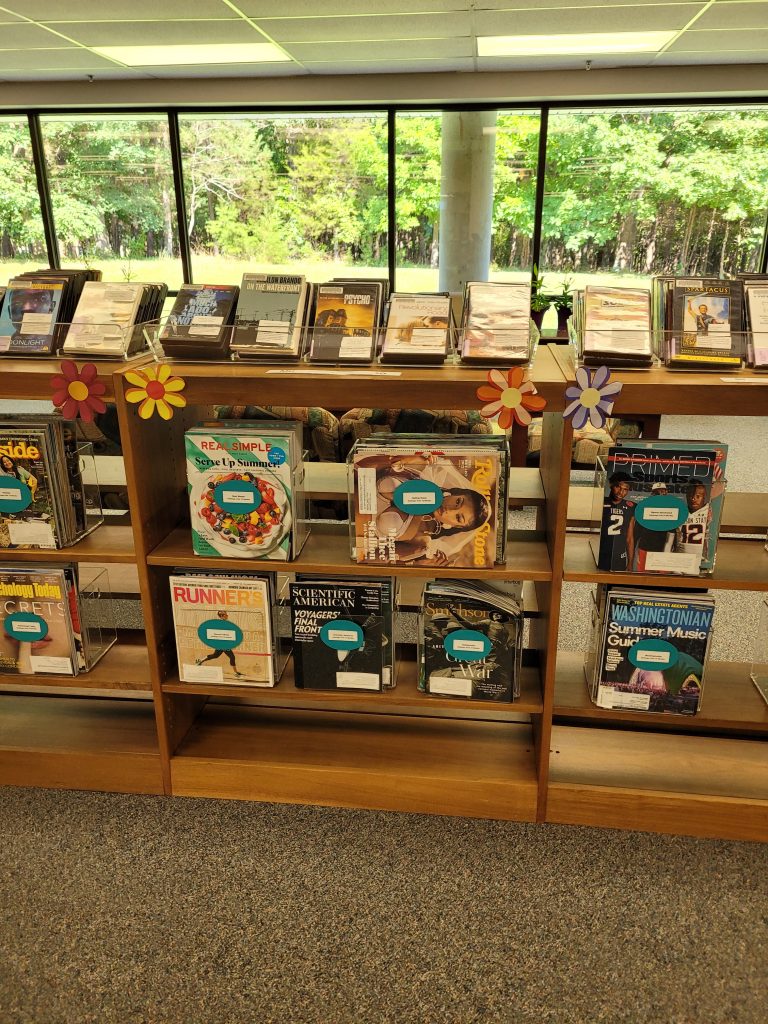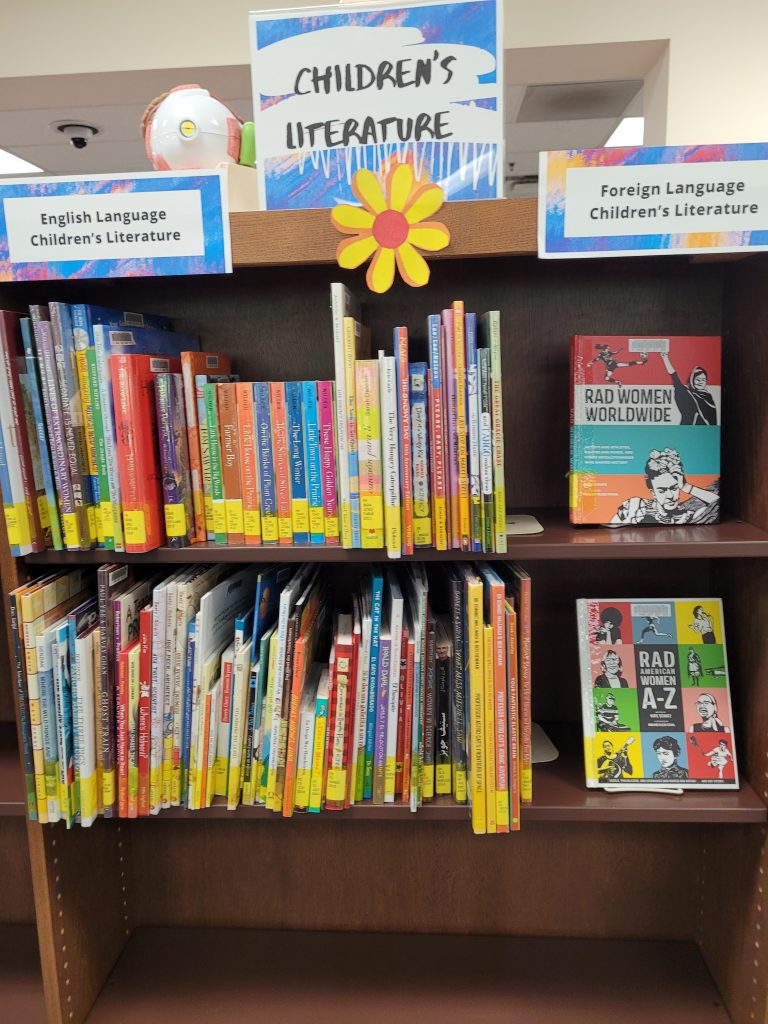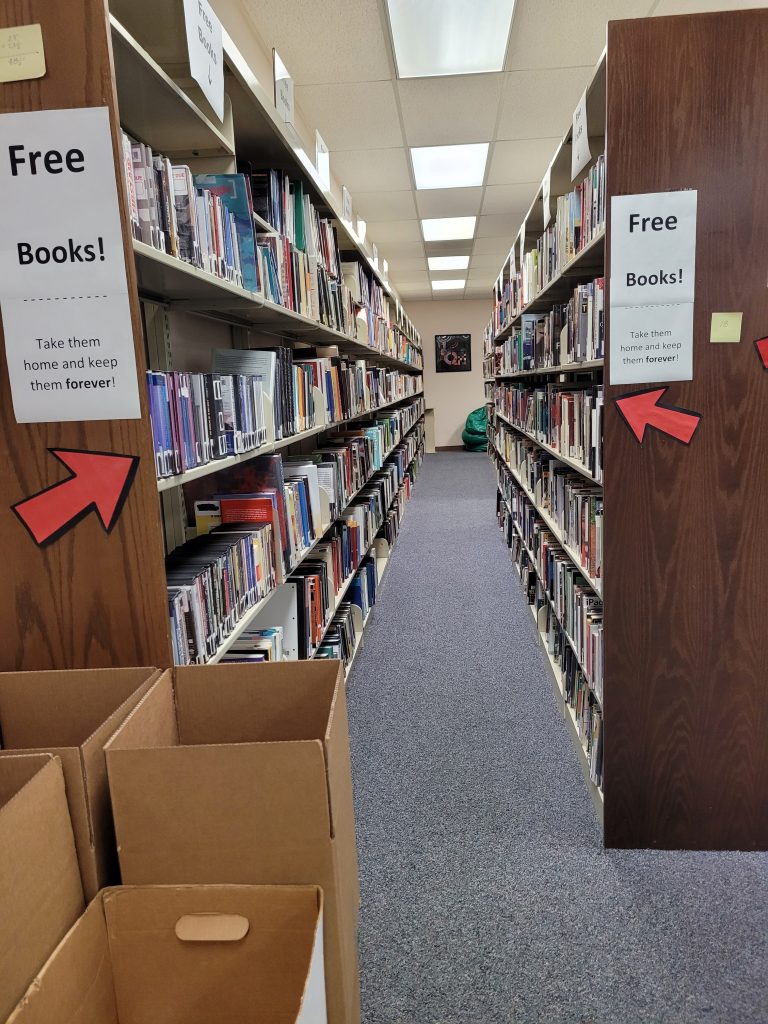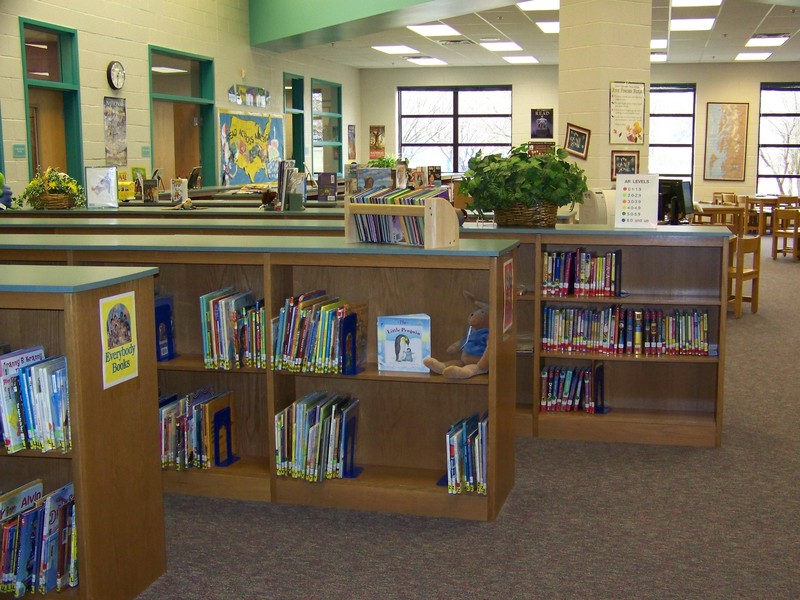The Space and Access
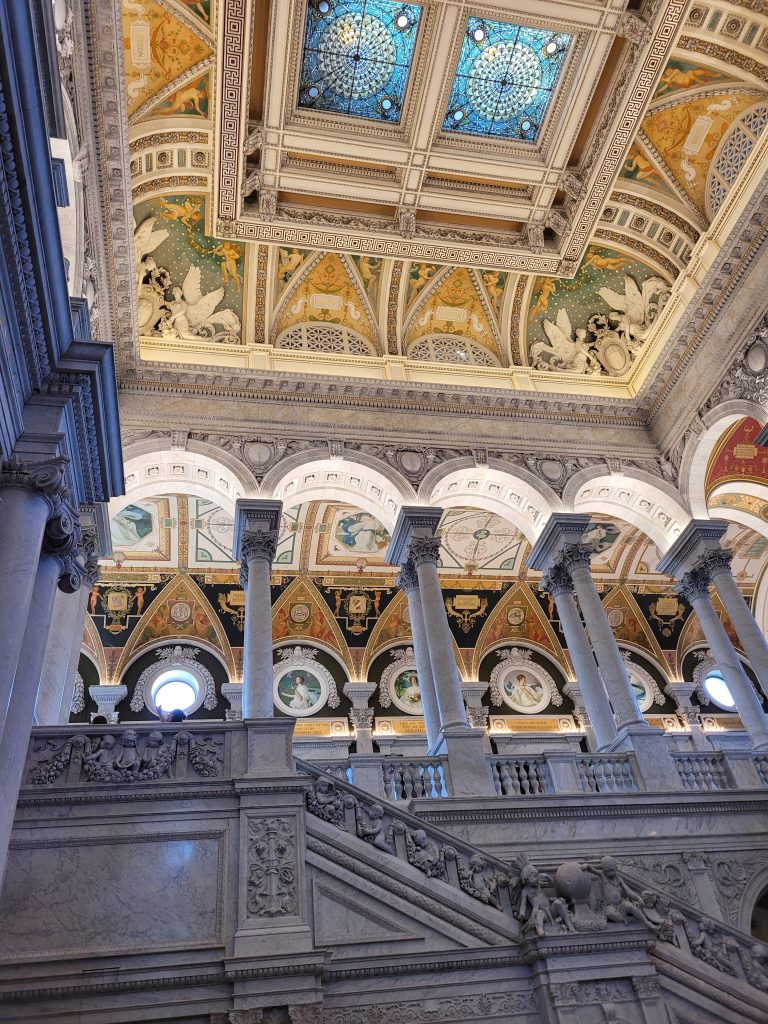
I had the privilege of visiting the Library of Congress, which can only be described as one of the most enriching experiences as a student of library sciences. Walking into the building built in the 1800s, you see the majestic architecture with columns reaching 75 feet in the air, marble flooring & massive staircases with mosaic walls and stained-glass windows. It is designed to be a research collection for Congress, but it is also open to the public. At the moment, you have to make an online request for a timed entry to visit. When visiting, the most awe-inspiring room was the reading room, where you can order materials and study.
Great Hall. View from the First floor. Library of Congress Thomas Jefferson Building, Washington, D.C.
(Nagashima, S., 2022)
Collections
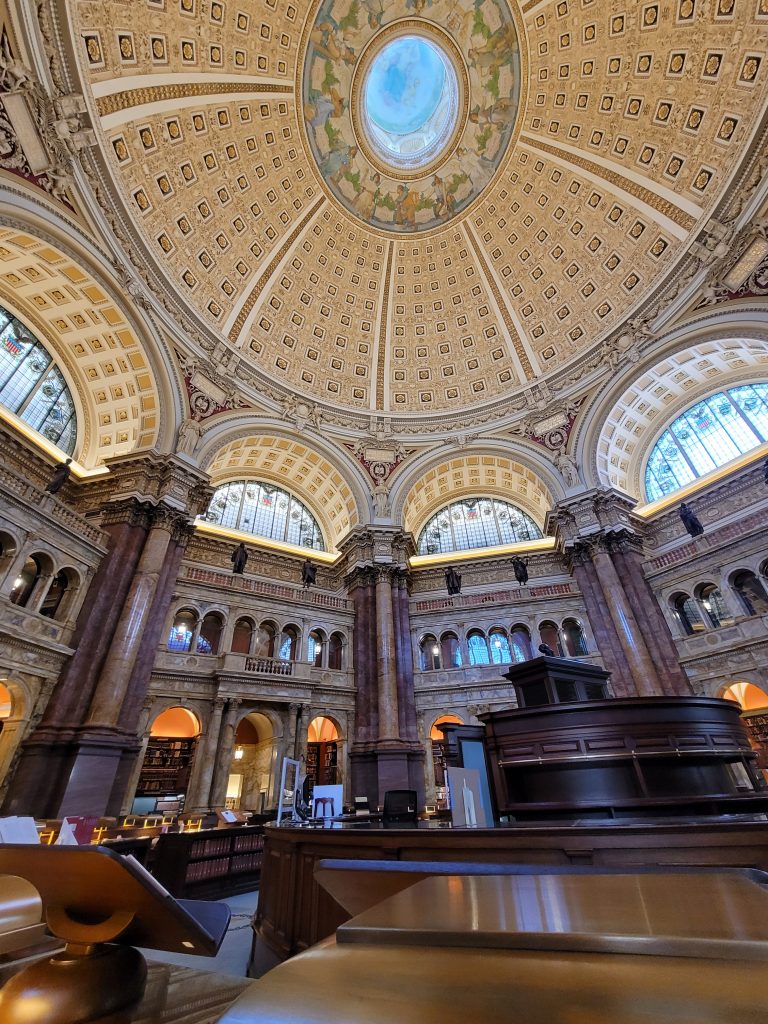
If you request reading room access, you have access to the world’s greatest collection of humanity’s knowledge. The Library of Congress holds over 173 million items and received more than 15,000 items a day and adds about 10,000 of those to the collection. Also, The Library of Congress is also the largest law library in the world. The collection is vast and diverse with materials in 470 languages.
To get access to the reading room, it is suggested to apply online before your visit. Once there you go to the ground floor level and meet with the very friendly & helpful staff member who verifies your online information, takes your picture, and gives you your card which is valid for two years. Then you can walk across the hall to the entrance to the reading room where you can request materials. Materials if onsite can take an hour to receive or you can request them online and the materials are held for 3 days. If the materials are in another location it may take up to 3 days to receive and the items are held for 14 days.
Main Reading Room, View from research desk first floor. Library of Congress Thomas Jefferson Building, Washington, D.C. (Nagashima, S., 2022)
Special Events & Services
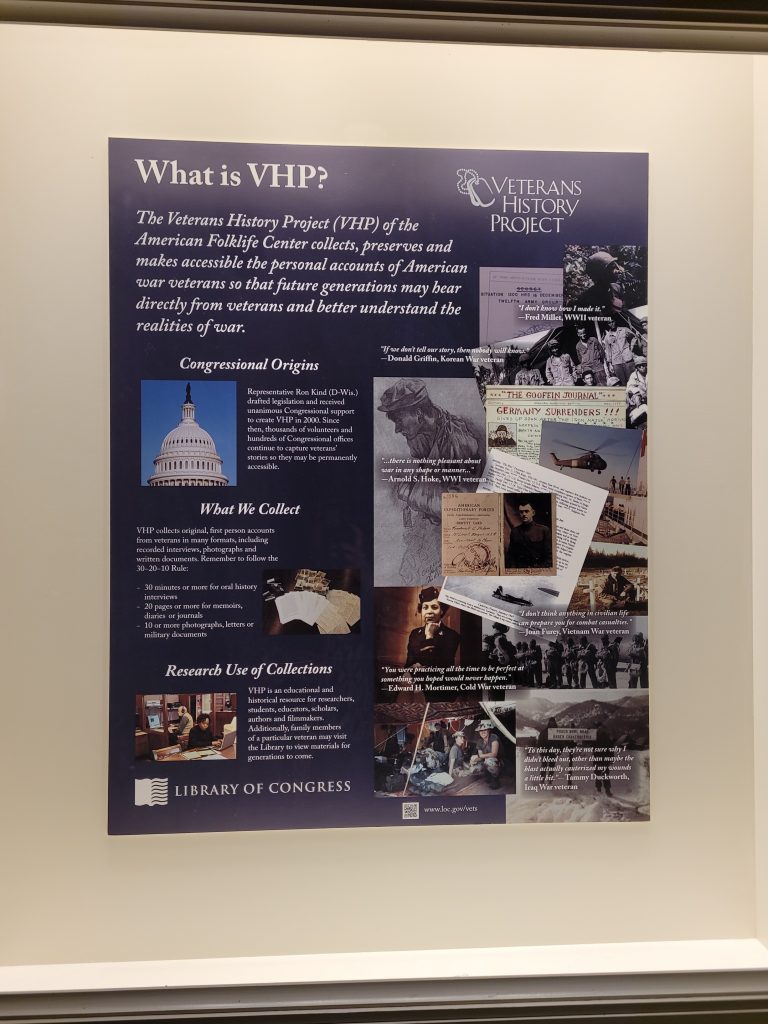
Not only does The Library of Congress have materials to request but they have special events for the public to experience from movies in the great hall to workshops and webinars. One recent special event was a display of the library’s rare books recollecting Juneteenth the emancipation of African Americans which was available for viewing in the main reading room. Another great service they are organizing is called the Veterans History Project. The goal is to collect and make accessible the firsthand remembrances of World War 1 to the present times. Special Libraries have the responsibility to preserve history in all kinds of ways in order to pass it to future generations (Rubin & Rubin, 2020, p. 94-95). To preserve this history is monumental and anyone 15 years or older can get a field kit to learn how to document history.
Signage of Veteran History Project, Ground floor corridor. Library of Congress Thomas Jefferson Building, Washington, D.C. (Nagashima, S., 2022)
Digital Access & Accessibility
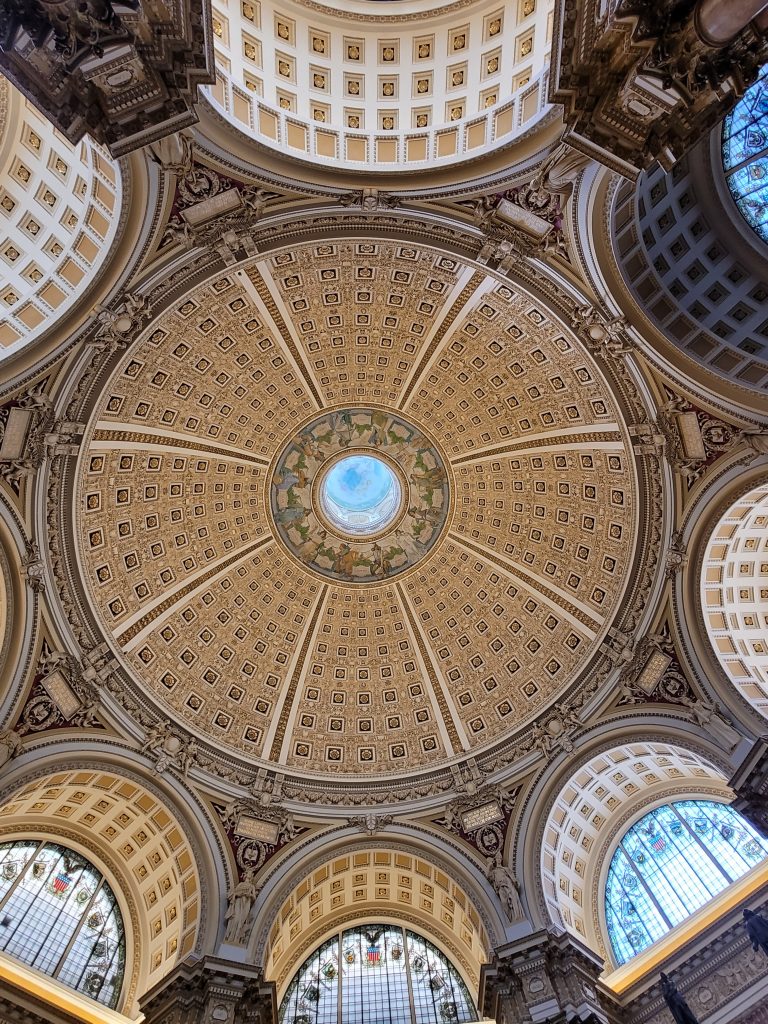
The library of Congress’s website is well organized and assessable to all. On most pages, you can alter the language with a simple dropdown button. They are committed to providing access to all and have an ADA coordinator on staff to help arrange interpreting services, touch history tours, and assistance with their BARD mobile app. The BARD mobile app gives access to talking books, braille, and audio recordings. They truly want to be a role model for libraries and offer numerous services and options of ways to access the collection.
This truly was an extraordinary, monumental visit for me and I plan to go back to request some materials and hold history in my hands.
Main Reading Room, Domed Ceiling. Library of Congress Thomas Jefferson Building, Washington, D.C. (Nagashima, S., 2022)
References
Nagashima, S. (2022) Great Hall, Main Reading Room, Signage of Veteran History Project, Main Reading Room. [Photographs of Library of Congress]
Rubin, R. E., & Rubin, R. G. (2020). Foundations of library and information science (5th ed.). ALA Neal-Schuman.
